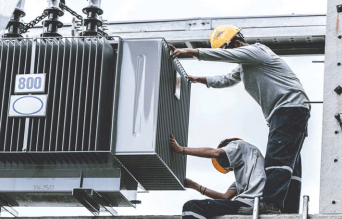Premature Breakdown - Impact of distribution asset failure on consumer tariffs in Rajasthan by Manas Kundu in Power Line Jan 2022
The distribution system is the back- bone of the power sector, helping deliver quality supply. In India, it is also the weakest link in the delivery of electricity to citizens. Due to lower- than-cost tariffs and non-receipt of mandated subsidy from the government in time, the financial health of the public distribution utilities is precarious. Acc – or ding to the latest reports, distribution companies collectively owe more than Rs 1.5 trillion to generating companies in India. Further, utilities are facing pr – ob lems such as high network losses and low power supply quality due to several reasons, including absence of an asset management philosophy, power theft, poor industrial relations, and erratic supply causing surges.

Distribution utilities in India have a high transformer failure rate in the range of 12-17 per cent as compared to the low failure rate of 1-2 per cent experienced by well-run utilities in developed coun- tries as well as our own private utilities. A high asset failure rate and low quality of supply create a sense of perennial mi – s trust between utilities and customers. In the face of demanding consumers, repeated failures and downtime also increase operations and maintenance costs. This, in turn, increases electricity tariffs for consumers.
In the distribution network, the most ess – ential element is the distribution trans – for mer (DT), which is a capital-intensive element. DTs are facing a high failure rate as compared to other key assets of the distribution system. Their failure leads to:
- Failure of the distribution system
- Revenue loss due to downtime
- Financial loss in repair and replacement
- Failure in meeting reliability indices
It is obvious that the frequent failure of such capital-intensive assets at the dis- tribution level will have significant cost implications for the overall annual revenue requirement (ARR) of any utility. The Electricity Act, 2003, emphasises the ne ed to provide reliable and affordable electricity to all consumers. If consumer tariff increases have to be kept at a mi – nimum, it is necessary to minimise the costs associated with the failure of these assets. With this perspective, the In – ternational Copper Association (In dia), a leading not-for-profit organisati on pro moting sustainable developme nt worldwide, entrusted Idam Infra struc – ture Advisory Pvt. Limited (Idam Infra) with analysing the distribution asset failure rate and its impact on consumer tariffs of a chosen utility.

